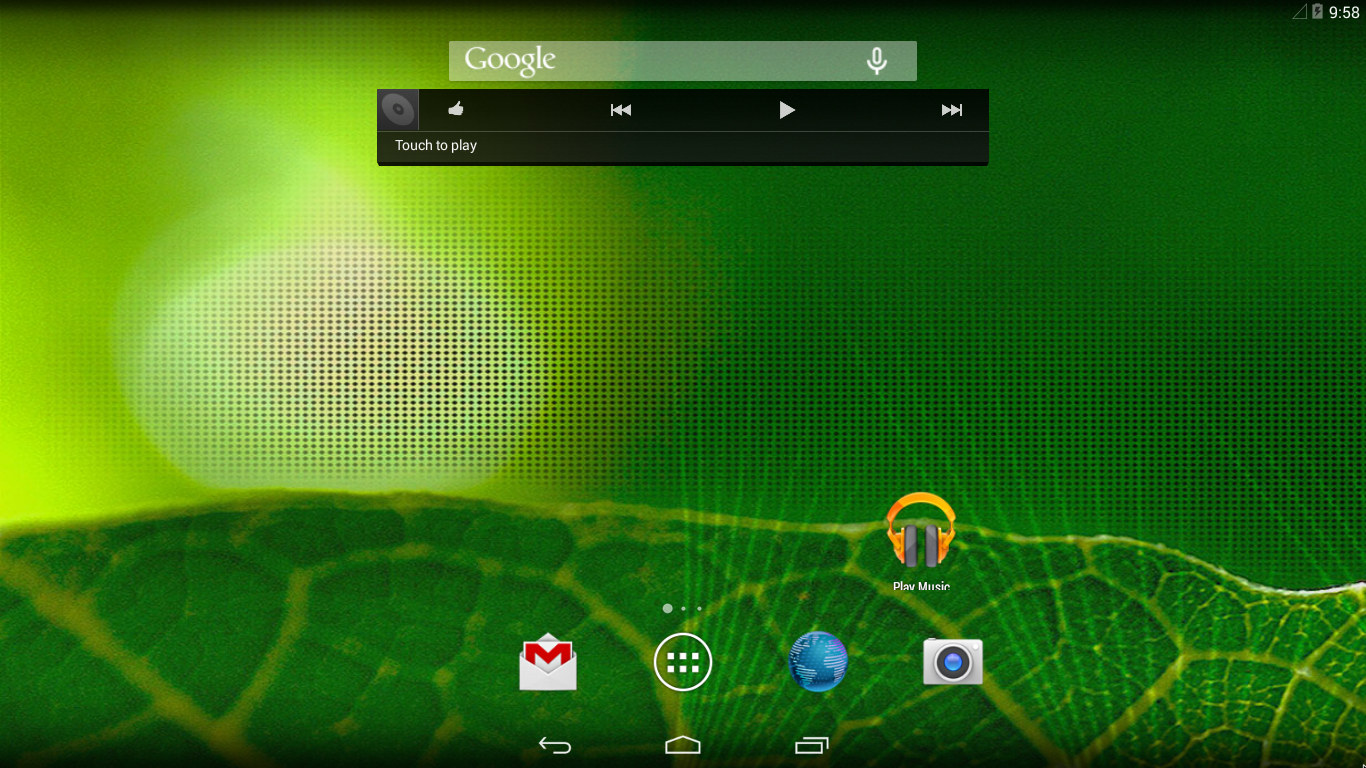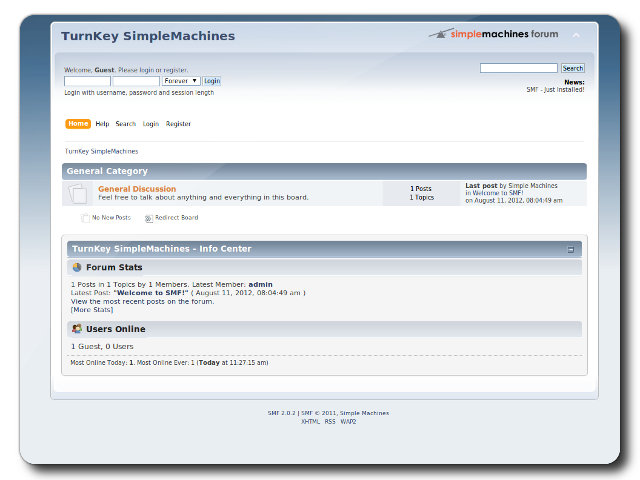Android-x86 is a port of the Android open source mobile operating system to the x86 (32-bit) architecture, allowing users to run Android applications and replace their existing operating system with the Android OS.
Features at a glance
Key features include a KMS (Kernel Mode Setting) enabled Linux kernel 3.10.x LTS, Wi-Fi support, battery status, V4l2 camera support, G-sensor, bluetooth, suspend, resume, audio though ALSA, and mouse wheel support.
In addition, it supports software mouse cursor, external monitors, debug mode through Busybox, external keyboards, netbook native resolution, better disk installer, as well as external storage automatic mount.
Distributed as a 32-bit Live CD
It is distributed as a single Live CD ISO image that supports only the 32-bit hardware platform. From the boot prompt you can start the live environment with default settings, with the VESA framebuffer, or using the debug mode. It is also possible to install the OS to a local disk drive.
Originally designed as a collection of patches for Android x86 support, the project matured enough in the last years to finally be seriously considered as a good alternative operating system for personal computers.
Supported computers
At the moment, Android-x86 was tested only with the ASUS Eee PC platforms, Viewsonic Viewpad 10 tablet, Dell Inspiron Mini Duo hybrid laptop, Samsung Q1U UMPC device, Viliv S5 handheld PC, as well as with the Lenovo ThinkPad x61 tablet.
At the moment, the project is in active development state. The final release of the project will integrate support for multiple targets, multi-touch touchpad, better power management and multimedia support, OpenGL ES hardware acceleration for Intel and ATI Radeon graphics cards, and OpenGL emulation layer.
Conclusions
In conclusion, if you ever wanted to run Android on a desktop computer or laptop, the Android-x86 does just that. It allows users to install the Android OS or just use it directly from a USB flash drive or optical media on their personal computers.
What is new in this release:
- Support both 64-bit and 32-bit kernel and userspace.
- Support OpenGL ES 3.x hardware acceleration for Intel/AMD/Nvidia, VMware and QEMU(virgl) by Mesa 18.1.2.
- Support OpenGL ES 2.0 via SwiftShader for software rendering on unsupported GPU devices.
- Support hardware accelerated codecs on devices with Intel HD & G45 graphics family.
- Support secure booting from UEFI and installing to UEFI disk.
- A text based GUI installer.
- Add theme support to GRUB-EFI.
- Support Multi-touch, Audio, Wifi, Bluetooth, Sensors, Camera and Ethernet (DHCP only).
- Auto-mount external usb drive and sdcard.
- Add Taskbar as an alternative launcher which puts a start menu and recent apps tray on top of your screen and support freeform window mode.
- Enable ForceDefaultOrientation on devices without known sensors. Portrait apps can run in a landscape device without rotating the screen.
- Support arm arch apps via the native bridge mechanism. (Settings -> Android-x86 options)
What is new in version :
- Add Taskbar as an alternative launcher which puts a start menu and recent apps tray on top of your screen.
- Enable freeform window mode support.
- Enable SDCardFS support (not available in live mode).
- Enable ForceDefaultOrientation on devices without known sensors. Now portrait apps can run in a landscape device without rotating the screen.
- A new software renderer SwiftShader which provides better performance on devices without a supported GPU.
- Improve QEMU virgl stability.
- Support NVMe SSD.
- Update to the latest LTS kernel 4.9.54 with more patches from AOSP.
- Update Mesa to 17.1.10 with RGBA_8888 support on i965.
- Improve the native bridge support (64-bit only). Enable it via Settings -> Apps Compatibility.
What is new in version 6.0-r3:
- CD/DVD auto-mount.
- Fix VMware broken since 6.0-r2.
- A qemu-android script to launch Android-x86 in QEMU. (only available in RPM installation)
- Update to latest Android Marshmallow-MR2 release (6.0.1_r79).
- Update kernel to 4.4.62 with more patches from AOSP.
- Update Mesa to 17.0.4.
- More updates from upstream projects (libdrm, ntfs-3g, exfat, bluez).
What is new in version 6.0-r1:
- Update kernel to 4.4.20 with more patches from AOSP.
- Update Mesa to 12.0.2.
- Preliminary HDMI audio support.
- Add F2FS support.
- Change trackpad cursor from circle to normal mouse pointer (back-ported from Android N).
- Improve suspend/resume issues caused by wifi drivers.
What is new in version 4.4-r5 / 5.1 RC1 / 6.0 Build 20160129:
- It addresses more hazi fonts issue of Mesa 10.5.9 found on Intel Gen5 GPUs.
What is new in version 4.4-r5 / 5.1 RC1 / 6.0 Build 20160127:
- It addresses more hazi fonts issue of Mesa 10.5.9 found on Intel Gen5 GPUs.
What is new in version 4.4-r3 / 5.1 RC1:
- Supports 64-bit kernel and userspace, as well as 32-bit system.
- Update kernel to 4.0.9.
- Enable OpenGL ES hardware acceleration for Intel/AMD(radeon/radeonsi)/Nvidia(nouveau) chipsets.
- Support booting from UEFI and installing to UEFI disk.
- Be able to install to ext4/ext3/ext2/ntfs/fat32 filesystems via a text based GUI installer.
- Support Multi-touch, Audio, Wifi, Bluetooth, Sensors, Camera and Ethernet (DHCP only).
- Auto-mount external usb drive and sdcard with filesystem vfat/ntfs/exfat/ext4.
- Support VM including Qemu, VirtualBox and VMware.
- Support foreign archs (arm / arm64) via the native bridge mechanism. (Settings -> Apps Compatibility)
What is new in version 4.4-r3:
- Upgrade the kernel to 4.0.8 with more drivers enabled to support modern hardware. Baytrail platform is well supported.
- Replace Bluedroid by the Bluez stack. Bluetooth is more stable and usable.
- Be able to install image and grub2-efi to GPT partitioned disks.
- Add a new sensor HAL to support iio style sensors.
- Update Mesa to 10.5.9. Enable hardware acceleration for Nvidia chips (nouveau) and VMware (vmwgfx).
- Improve the GPS HAL.
- Merge updates from upstream.
- More bugfixes.
What is new in version 4.4-r2:
- Upgrade the kernel to the latest stable version 3.18 with more drivers enabled. Allow us to support more modern hardware like Intel Baytrail platform.
- Primary support booting from UEFI. Note the installer still doesn't work for GPT partition table. But you may manually install it.
- Improve suspend/resume.
- Merge updates from upstream (ffmpeg, filemanager, ...)
- A lot of bugfixes.
What is new in version 4.4-r1:
- Integrate the ffmpeg as the stagefright-plugins to support much more multimedia files. Now we can play HD and full HD videos in apps.
- Use the latest longterm stable kernel 3.10.52 with more drivers enabled. Most netbooks can run Android-x86 in the native resolution.
- OpenGL ES hardware acceleration for AMD Radeon and Intel chipsets (PowerVR chips are NOT supported).
- Enhance the installer to support upgrade from previous versions (since ics-x86). The text based GUI installer supports ext3/ext2/ntfs/fat32 filesystems.
- KitKat style lanucher (Trebuchet).
- Support Multi-touch, Wifi, Audio, Bluetooth, G-sensor and Camera.
- Support Huawei 3G modem.
- Simulate sdcard by internal storage.
- External usb drive and sdcard are auto mounted to /storage/usbX on plugging. Support filesystem vfat/ntfs/exfat/ext4.
- Support hybrid mode of iso images.
- Multi-user support (max 8).
- Support Ethernet (DHCP only).
- Support 5-point touch calibration on some devices.
- Support VM like Qemu and VMware.
What is new in version 4.4 RC2:
- Update to stable kernel 3.10.40 with more bugfixes.
- Automatically mount ntfs/exfat/ext4 in the external storages (usbdisk/sdcard).
- Enhance the sensors support including Intel sensor-hub and Pegatron Lucid Tablet Accelerometer.
- Add launcher and file manager from CyanogenMod.
- Add 5-point touch calibration app from 0xdroid.
- Improve suspend and resume functions.
- Add rtl8723au wifi driver.
What is new in version 4.4 RC1:
- Integrate the ffmpeg as the stagefright-plugins to support much more multimedia files. Now we can play HD and full HD videos in apps.
- Use the latest longterm stable kernel 3.10.30 with more drivers enabled. Most netbooks can run Android-x86 in the native resolution.
- OpenGL ES hardware acceleration for AMD Radeon and Intel chipsets (not include the PowerVR chips).
- Enhance the installer to support upgrade from previous versions (since ics-x86). The text based GUI installer supports ext3/ext2/ntfs/fat32 filesystems.
- KitKat style lanucher (Launcher3).
- Support Multi-touch, Wifi, Audio, Bluetooth, G-sensor and Camera.
- Simulate sdcard by internal storage.
- External usb drive and sdcard are auto mounted to /storage/usbX on plugging.
- Support hybrid mode of iso images.
- Multi-user support (max 8).
- Support Ethernet (DHCP only).
- Support VM like Qemu and VMware.
What is new in version 4.0 RC2:
- Kernel 3.0.36 with more drivers and bug fixes.
- Enable Dalvik JIT compiler support.
- Support some 3G modem.
- Ready to run arm translator. (You still need to install Intel's libraries from BuilDroid.)
- Physical keyboard layout selection.
- Support two cameras.
- Fake SD card is replaced by internal storage support.



Comments not found